Related Research Articles

Ballroom dance is a set of European partner dances, which are enjoyed both socially and competitively around the world, mostly because of its performance and entertainment aspects. Ballroom dancing is also widely enjoyed on stage, film, and television.
Dance moves or dance steps are usually isolated, defined, and organized so that beginning dancers can learn and use them independently of each other. However, more complex movements are influenced by musicality and lyrical relevance to express emotions or refer to a message. Dance moves tend to emphasize the concepts of lead and follow and connection.
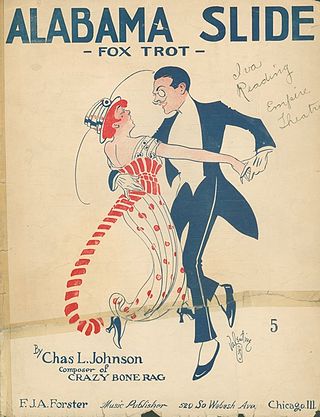
The foxtrot is a smooth, progressive dance characterized by long, continuous flowing movements across the dance floor. It is danced to big band music. The dance is similar in its look to waltz, although the rhythm is in a 4
4 time signature instead of 3
4. Developed in the 1910s, the foxtrot reached its height of popularity in the 1930s and remains practiced today.

Tango is a partner dance and social dance that originated in the 1880s along the Río de la Plata, the natural border between Argentina and Uruguay. The tango was born in the impoverished port areas of these countries from a combination of Argentine Milonga, Spanish-Cuban Habanera, and Uruguayan Candombe celebrations. It was frequently practiced in the brothels and bars of ports, where business owners employed bands to entertain their patrons. It then spread to the rest of the world. Many variations of this dance currently exist around the world.

Country–western dance encompasses any of the dance forms or styles which are typically danced to country-western music, and which are stylistically associated with American country and/or western traditions. Many are descended from dances brought to the United States by immigrants from the United Kingdom and Europe as early as the 1700s, which became integrated into American popular culture. Country dancing is also known as "kicker dancing" in Texas.

James Reese Europe was an American ragtime and early jazz bandleader, arranger, and composer. He was the leading figure on the African-American music scene of New York City in the 1910s. Eubie Blake called him the "Martin Luther King of music".

Castle Walk is a dance originated and made famous by Vernon and Irene Castle. The moniker was coined from the Castle's signature dance step styling, and their touring stage show of 1913 lead with this as their signature. The Castle Walk became popular through its introduction into the Tango. "Castle Walk" is also a popular American song composed for Vernon and Irene Castle by James Reese Europe (1880–1919) and Ford Thompson Dabney (1883–1958). It was first recorded in 1914, commissioned by the Castles to accompany and provide music for their social dancing programs, having been one of these resulting pieces. Though many dance accompaniments of the time are syncopated rhythms, Castle Walk in particular carries syncopation in half-measure.

Jacob Thune Hansen Gade was a Danish violinist and composer, mostly of orchestral popular music. He is remembered today for a single tune, Jalousie.

The turkey trot was a dance made popular in the early 1900s. The Turkey Trot was done to fast ragtime music popular in the decade from 1900 to 1910 such as Scott Joplin's Maple Leaf Rag. Driven largely by youth counterculture of the time, the turkey trot fad quickly fell out of favor as the foxtrot, a much more conservative dance step based on the waltz, rose to popularity in 1914.
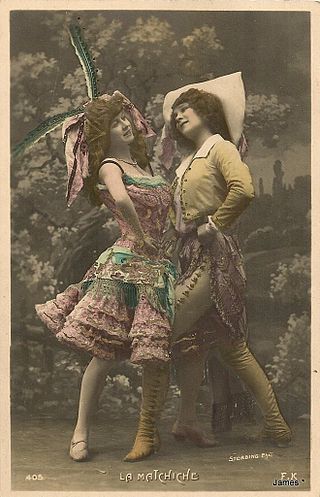
The maxixe, occasionally known as the Brazilian tango, is a dance, with its accompanying music, that originated in the Brazilian city of Rio de Janeiro in 1868, at about the same time as the tango was developing in neighbouring Argentina and Uruguay. It is a dance developed from Afro-Brazilian dances and from European dances.

A palm court is a large atrium with palm trees, usually in a prestigious hotel, where functions are staged, notably tea dances. Examples include the Langham Hotel (1865), Alexandra Palace (1873), the Carlton Hotel (1899), and the Ritz Hotel (1906), all in London; and the Alexandria Hotel in Los Angeles, Palace Hotel, San Francisco, Britannia Hotel in Trondheim and the Plaza Hotel in New York City. Capitalizing on their popularity, some ocean liners also had palm courts, notably the RMS Titanic (1912).
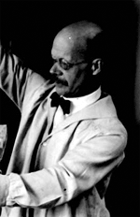
Troy Sylvanus Kinney was an American artist, etcher, and author. Troy Kinney was most notable for his works portraying dance performers, fanciful subjects, and classically styled nudes. He worked with dancers, including Ruth St. Denis, Anna Pavlova, and Sophie Pflanz among others. His artistic works are part of the collections of the Art Institute of Chicago, the Cleveland Museum of Art, the New York Public Library, the Library of Congress, and many others.
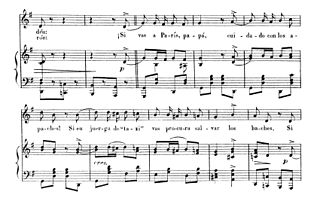
The One-Step was a ballroom dance popular in social dancing at the beginning of the 20th century.
Albert Crist "Allie" Miller was an American football player and coach. He served as the head football coach at Villanova College—now known as Villanova University—from 1921 to 1922, compiling a record of 11–4–3. Miller played college football at the University of Pennsylvania from 1907 to 1909.
Sadie G. Koninsky was an American composer, music publisher, and music teacher who lived most of her life in Troy, New York. A prolific composer, she is thought to have authored over 300 pieces of music, including waltzes and marches. "Eli Green's Cakewalk", which became a popular hit when it appeared in 1898, was also the first cakewalk published by a woman. Some of her work was published under her male pseudonym, Jerome Hartman.

Cross-step waltz is a social ballroom dance in time, performed primarily in closed position, to slower tempo waltz music. It is characterized by a "primary cross-step" where the Lead role crosses the right foot over the left, as the Follow role crosses the left foot over the right, on the first count of the musical measure. Cross-step waltz can travel and rotate like traditional waltzes, while the dynamic of the cross-step facilitates a wide range of traveling variations.
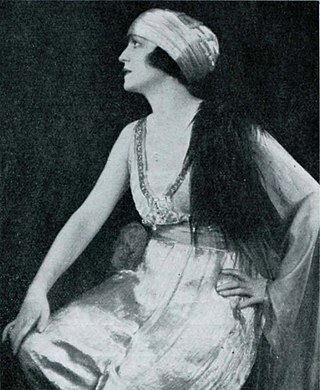
Joan Sawyer, born Bessie Josephine Morrison, was an American society dancer, composer, suffragist, and businesswoman, who performed on the vaudeville circuit in the 1910s. Among her dance partners was a young Rudolph Valentino.
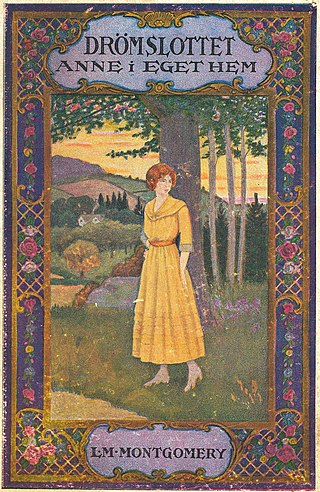
Maria Louise Kirk, usually credited as M. L. Kirk or Maria L. Kirk, was an American painter and illustrator of more than fifty books, most of them for children.

Sonia Serova, born Eileen Mary Swepstone, was a British-born American modern dancer, also known as Eileen West and Eileen Kiefer. She taught dance in New York City, and published several dance education manuals, including three manuals for the dance education of very young children.
References
- 1 2 3 Moore, Arabella E. (1900). The dance, ancient and modern / translated from the French. Philadelphia, Pa.: A. Moore. p. 26.
- 1 2 Swepstone, Eileen (1914). The tango, as standardized and taught by the representative dancing masters of the North American continent. Vancouver, B.C.: J. H. Welch. p. 14.
- ↑ Kinney, Troy (1914). Social dancing of to-day, demonstrated by Mr. John Murray Anderson; with text, twenty-nine diagrams and fifty-two illustrations from photographs by Troy and Margaret West Kinney. New York, Frederick A. Stokes Co. p. 21.
- ↑ Newman, Albert W. (1914). Dances of to-day. Philadelphia, The Penn Publishing Co. p. 90.
- 1 2 3 Kinney, Troy (1914). Social dancing of to-day, demonstrated by Mr. John Murray Anderson; with text, twenty-nine diagrams and fifty-two illustrations from photographs by Troy and Margaret West Kinney. New York, Frederick A. Stokes Co. p. 22.
- 1 2 3 Newman, Albert W. (1914). Dances of to-day. Philadelphia, The Penn Publishing Co. p. 83.
- 1 2 Walker, Caroline (1914). The modern dances, how to dance them: complete instructions for learning the tango, or one step, the Castle walk, the walking Boston, the hesitation waltz, the dream waltz, the Argentine tango (3rd ed.). Chicago: Saul Brothers. p. 35.
- ↑ Swepstone, Eileen (1914). The tango, as standardized and taught by the representative dancing masters of the North American continent. Vancouver, B.C.: J. H. Welch. p. 15.
- ↑ "Boston [Boston dip]". The Grove Dictionary of American Music. Oxford University Press. 2013-01-01. doi:10.1093/acref/9780195314281.001.0001. ISBN 978-0-19-531428-1.
- ↑ Newman, Albert W. (1914). Dances of to-day. Philadelphia, The Penn Publishing Co. p. 86.
- ↑ Newman, Albert W. (1914). Dances of to-day. Philadelphia, The Penn Publishing Co. p. 88.
- ↑ Newman, Albert W. (1914). Dances of to-day. Philadelphia, The Penn Publishing Co. p. 92.
- ↑ Newman, Albert W. (1914). Dances of to-day. Philadelphia, The Penn Publishing Co. p. 93.
- ↑ Newman, Albert W. (1914). Dances of to-day. Philadelphia, The Penn Publishing Co. p. 94.
- ↑ Newman, Albert W. (1914). Dances of to-day. Philadelphia, The Penn Publishing Co. p. 96.
- ↑ Newman, Albert W. (1914). Dances of to-day. Philadelphia, The Penn Publishing Co. p. 98.
- ↑ Newman, Albert W. (1914). Dances of to-day. Philadelphia, The Penn Publishing Co. p. 100.
- ↑ Newman, Albert W. (1914). Dances of to-day. Philadelphia, The Penn Publishing Co. p. 101.
- ↑ Newman, Albert W. (1914). Dances of to-day. Philadelphia, The Penn Publishing Co. p. 103.